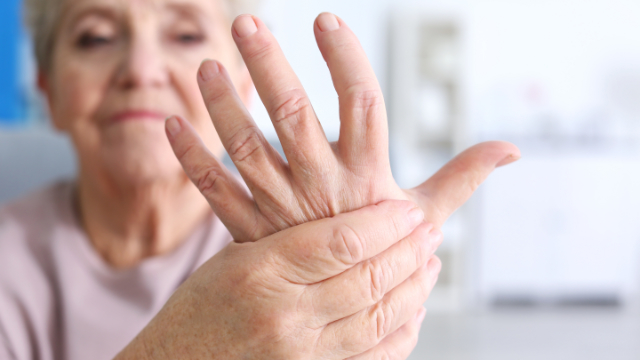News
Tips to Improve Exercise Tolerance for Patients with Osteoarthritis

For decades, scientists have repeatedly proven that exercise can be beneficial for patients with osteoarthritis (often diagnosed in the shoulder, hip, and/or knee).
Here are exercise tips that will inspire you to exercise and also seek out the care of one of our physical therapy experts for a tailored and personalized program to help you manage your osteoarthritis.
- Use a Stationary Bike
- Stationary bikes provide a low–impact way to engage in cardiovascular exercise without putting excessive strain on the joints affected by osteoarthritis.
- Use Repeated Movements
- Repeated movements help to lubricate the joints and can improve both flexibility and strength over time.
- Progressive Sit to Stand to Box Squats
- Progressing from simple sit–to–stand movements to box squats allows for a gradual increase in difficulty, helping to build strength without causing undue stress on the joints.
- Prioritize the Posterior Lower Extremity Muscles
- Focusing on the muscles at the back of the legs, such as the hamstrings and calf muscles, can help provide better support for the knee and hip joints, which are often affected by osteoarthritis.
- Stagger Treatment Out
- Instead of cramming all your exercises into one session, stagger them throughout the week to allow for adequate recovery and minimize pain.
- Use Household Items for Resistance
- Items like water bottles or stair steps can serve as makeshift weights, making it easier to engage in resistance training at home. A weighted backpack can also be used for added resistance.
- Emphasize Slow Eccentric Exercises
- Slow, controlled movements during the eccentric phase of an exercise can help to build muscle strength without causing a flare–up in symptoms.
- Have a Physical Therapist Create an Exercise Routine that You Can Tolerate and Is a Positive Experience
- It's crucial to create a routine that is not only effective but also enjoyable, as this will increase the likelihood of long–term adherence.
- Understand that You May Have Pain During Exercise, but Over Time, It Will Subside
- It's natural to experience some discomfort when starting a new exercise regimen, but this should decrease as your body adapts.
- Understand that It Took Decades to Develop Osteoarthritis, and It Will Take Some Time to Improve
- Improvement will not happen overnight. Patience and consistent effort are key to managing osteoarthritis symptoms effectively.
Take the Next Step
If you're struggling with osteoarthritis and want to reduce your pain and improve your exercise tolerance, consult one of our physical therapists for a tailored treatment plan.
Schedule your physical therapy consultation today and take the first step towards a healthier, more active lifestyle.
Reference:
OARSI Guidelines for the Non–Surgical Management of Knee Osteoarthritis
